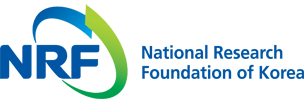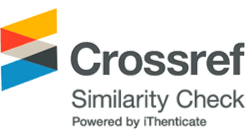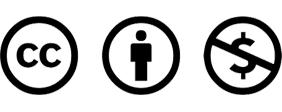Research Article
Bae, S.H. and D.H. Kim. 2020. 5th National Natural Environment Survey in 2019 - Topography of Maji (376042). National Institute of Ecology (NIE), Seocheon, Korea (in Korean).
Bakalin, V.A. 2010. Hepaticae of the Kuril Islands (Northwestern Pacific): a transoceanic route from Circumboreal to East Asian flora. Ann. Bot. Fen. 47:81-105.
10.5735/085.047.0201Chien, G., M.R., Crosby, and H. Si. 2000. Moss Flora of China Vol. 1. Missouri Botanical Garden Press and Science Press. St. Louis (USA) pp. 1-273.
Cho, Y.H., J.H. Kim, and S.H. Park. 2016. Grasses and Sedges in South Korea. Geobook, Seoul, Korea. pp. 1-528 (in Korean).
Choe, D.M. 1980. Illustrated Flora & Fauna of Korea. Vol. 24 (Musci, Hepaticae). Ministry of Education (MOE), Seoul, Korea. pp. 1-790 (in Korean).
Flora of North America Editorial Committee (FNA Editorial Committee). 2007. Bryophytes: Mosses 27 (1). Flora of North America. Oxford University Press, NY (USA). pp. 1-711.
Gyeonggi Province Museum (GPM). 2001. The Site Survey Report in Im-jin River Valley, Gyeonggi Province. Gyeonggi Press, Yongin, Korea. pp. 1-545 (in Korean).
Gyeonggi Research Institute (GRI). 2022. The Alternatives for Developing Gamak Mountain Area's Tourist Attractions. Gyeonggi Research Institute (GRI), Suwon, Korea. pp. 1-150 (in Korean).
Hwang, H.J. 1991. Spore Plant of Joseon 9 (Bryophytes 2). Science Encyclopedia Synthetic Press, Pyeongyang, Democratic People's Republic of Korea. pp. 1-391 (in Korean).
Hyun, J.O. and H.K. Park. 2006. 3rd National Natural Environment Survey in 2006 - Flora of Maji (376042). National Institute of Environmental Research (NIER), Incheon, Korea (in Korean).
Kang, H.L., Y.J. Park, S.M. An, Y.B. Lee, H.R. Lee, and K.S. Cheon. 2022. The flora of vascular plants in Jinjosan Mt. (Uljin-gun, Gyeongsangbuk-do). Korean J. Environ. Biol. 40:11-24.
10.11626/KJEB.2022.40.1.011Kim, C.H. and J.H. Park. 2014. The Plants Native of the Korean Peninsula. National Institute of Biological Resources (NIBR), Incheon, Korea. pp. 1-912 (in Korean).
Kim, C.H., M.O. Moon, J.K. Ahn, I.C. Hwang, S.H. Lee, S.S. Choi, J.H. Lee, H.M. Bum, C.K. Kim, and J.Y. Cha. 2018. Floristic Target Species (FT species) in Korea. National Institute of Ecology (NIE), Seocheon, Korea. pp. 1-728 (in Korean).
Kim, J.H. and S.A. Park. 2022. Floristic study of Mt. Seongdeok (Ganghwa-gun) in Korea. Korean J. Environ. Biol. 40:615- 630.
10.11626/KJEB.2022.40.4.615Kim, J.H., J.H. An, B.Y. Lee, and J.S. Kim. 2019. Bryophyte flora of algific slopes in the Korean Peninsula. Korean J. Environ. Biol. 37(4):508-525.
10.11626/KJEB.2019.37.4.508Kim, J.H., J.S. Kim, S.S. Shin, T.I. Heo, Y.H. Kim, S.H. Park, and J.S. Kim. 2023. Vertical distribution and vascular plants in the Gakho mountain (Yeongdong-gun), Korea. Korean J. Environ. Biol. 41(1):60-88.
10.11626/KJEB.2023.41.1.060Kim, K.H., M.H. Kim, and S.H. Shin. 2020. 5th National Natural Environment Survey in 2019 - Flora of Maji (376042). National Institute of Ecology (NIE), Seocheon, Korea (in Korean).
Kim, W.H., M. Higuchi, and T. Yamaguchi. 2020. An updated list of mosses of Korea. J. Species Res. 9(4):377-412.
Kim, Y.H. and H.J. Hwang. 1991. Spore Plant of Joseon 8 (Hepaticae 1). Science Encyclopedia Synthetic Press, Pyeongyang, Democratic People's Republic of Korea. pp. 1-223 (in Korean).
Korea Meteorological Administration (KMA). 2022. Climate characteristics by region in Korea (Paju). Accessed on 28 Apr 2024. https://www.kma.go.kr/.
Lee, J.H. 2022. Yangju-si, Gamaksan-the best forest resort in Korea, Blueprint. 30 Nov. 2022. < https://www.kyeonggi.com/>.
Lee, K.S., C.H. Choi, and C.H. Shin. 2019. The flora of vascular plants of Mt. Gamak, Gyeonggi Province. Horitc. Environ. Biotechnol. 37(Ⅰ):173.
Lee, S.H., J.H. Choi, S.H. Shin, and D.B. Kim. 2015. 4th National Natural Environment Survey in 2014 - Flora of Maji (376042). National Institute of Ecology (NIE), Seocheon, Korea (in Korean).
Lee, S.H., J.K. Ahn, S.J. Park, C.H. Kim, and S.S. Cho. 2020. The flora of land plants (bryophytes and vascular plants) in Wangpicheon ecosystem and Landscape Conservation Area (ELCA), Korea. Korean J. Pl. Taxon. 50(3):279-317.
10.11110/kjpt.2020.50.3.279Lee, S.R., M.S. Cho, C.S. Cheong, H.C. Kim, and M.T.D. Wingate. 2003. Age, geochemistry, and tectonic significance of Neoproterozoic alkaline granitoids in the northwestern margin of the Gyeonggi massif, South Korea. Precambrian Res. 122:297-310.
10.1016/S0301-9268(02)00216-4Li, X.J., M.R, Crosby, and H. Si, 2001. Moss Flora of China Vol. 2. Missouri Botanical Garden Press and Science Press. St. Louis (USA). pp. 1-283.
Ministry of Environment (ME). 1999. (2nd) National Natural Environment Survey 1999-3rd year- Paju·Yeoncheon (04-14). Ministry of Environment (ME), Seoul, Korea. pp. 3-22 (in Korean).
National Geographic Information Institute (NGII). 2007. Mountains of Korea. National Geographic Information Institute, Suwon, Korea. pp. 1-630 (in Korean).
National Institute of Biological Resources (NIBR). 2015. A Field Guide to Bryophytes in Korea. Geobook, Seoul, Korea. pp. 1-335 (in Korean).
National Institute of Biological Resources (NIBR). 2023. The Biodiversity of the Korean Peninsula. Accessed on 9 Apr 2024. https://species.nibr.go.kr/.
National Institute of Ecology (NIE). 2019. Guidelines for the 5th National Natural Environment Survey. National Institute of Ecology (NIE), Seocheon, Korea. pp. 1-135 (in Korean).
National Institute of Ecology (NIE). 2023. The Endangered Wildlife (282 species). NIE Endangered Species Recovery Center, Youngyang, Korea. pp. 6-14, 404-589 (in Korean).
National Institute of Environmental Research (NIER). 1995. Survey for Ecological Impact by Naturalized Organism. National Institute of Environmental Research (NIER), Incheon, Korea. pp. 1-215 (in Korean).
Noguchi, A. 1987. Illustrated Moss Flora of Japan, Part 1: Andreaeaceae - Leucobryaceae. Hattori Botanical Laboratory, Nichinan, Japan. pp. 1-242.
Noguchi, A. 1988. Illustrated Moss Flora of Japan, Part 2: Calymperaceae - Bryaceae. Hattori Botanical Laboratory, Nichinan, Japan. pp. 243-491.
Noguchi, A. 1989. Illustrated Moss Flora of Japan, Part 3: Mniaceae - Thamnobryaceae Hattori Botanical Laboratory, Nichinan, Japan. pp. 493-742.
Noguchi, A. 1991. Illustrated Moss Flora of Japan, Part 4: Hookeriaceae - Brachytheciaceae. Hattori Botanical Laboratory, Nichinan, Japan. pp. 743-1012.
Noguchi, A. 1994. Illustrated Moss Flora of Japan, Part 5: Entodontaceae - Hylocomiaceae. Hattori Botanical Laboratory, Nichinan, Japan. pp. 1013-1253.
Paju. 2024. Paju is Pushing for the Construction of the Entrance Road to the Gamaksan Natural Recreation Forest. Accessed on 21 Sep 2024. https://www.paju.go.kr/.
- Publisher :The Plant Resources Society of Korea
- Publisher(Ko) :한국자원식물학회
- Journal Title :Korean Journal of Plant Resources
- Journal Title(Ko) :한국자원식물학회지
- Volume : 38
- No :1
- Pages :126-147
- Received Date : 2024-08-26
- Revised Date : 2024-09-30
- Accepted Date : 2025-01-09
- DOI :https://doi.org/10.7732/kjpr.2025.38.1.126




 Korean Journal of Plant Resources
Korean Journal of Plant Resources







